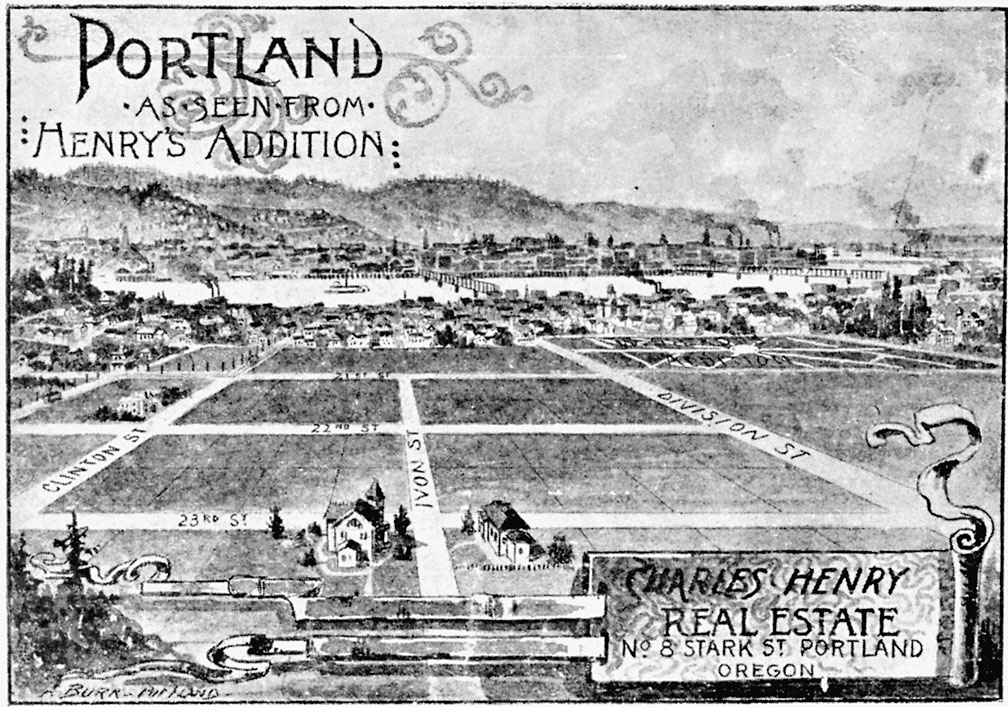A suburban Portland real estate development is depicted in this 1892 advertisement from Northwest Magazine, published in St. Paul, Minnesota.
Real estate developer Charles Henry first appears in Portland city directories in 1891, when he has an office downtown. The construction of bridges across the Willamette River and the extension of suburban steam-powered commuter railroads spurred a spate of real estate subdivision activity on the east side of the river in the late 1880s and early 1890s. Henry’s Addition was small, consisting of six blocks, each 200 feet square and each subdivided into eight lots of 50 feet by 100 feet.
The two buildings in the foreground still stand. The cottage on the right is very similar in plan to the George C. Flanders house of 1888. On the left is a two-story brick house with a corner tower; the Portland city directory of 1892 for Charles Henry states that he resides at the southeast corner of 23rd and Ivon in Henry’s Addition, which corresponds to this imposing edifice. Real estate was a fickle enterprise, and a nationwide depression in the early 1890s brought disappointment to many investors. In 1893 and 1894, Charles Henry is listed as living in a downtown rooming house called the Newcastle, rather than in Henry’s Addition.
This birdseye view toward the West Hills also shows Ladd’s Addition, a real estate platting of unusual design made in 1891 just to the north of Division Street between 12th and 20th. Its plan has been described by historian Eugene Snyder as “a rectangle crossed by two diagonals, which divide the plat into four isosceles triangles. Those are further divided into smaller triangles, quadrilaterals, parallelograms, and trapezoids.” Ladd died in 1893 before a single lot had been marketed, and settlement of his estate postponed sales until 1903; the lots in Ladd’s Addition were not fully sold until the 1920s.
Visible too in this view are the Madison Street Bridge (center) and the Morrison Street Bridge (right). To the left of Clinton Street is a small streetcar, and a row of poles marks the route of the new City & Suburban Railway line toward Woodstock along Clinton, 21st, and Taggert streets. Henry’s Addition still has a number of houses from the 1890s, when it became one of Portland’s first “streetcar suburbs.”
Further Reading:
Snyder, Eugene E. Portland Names and Neighborhoods: Their Historic Origins. Portland, Oreg., 1979.
Written by Richard Engeman, © Oregon Historical Society, 2005.
